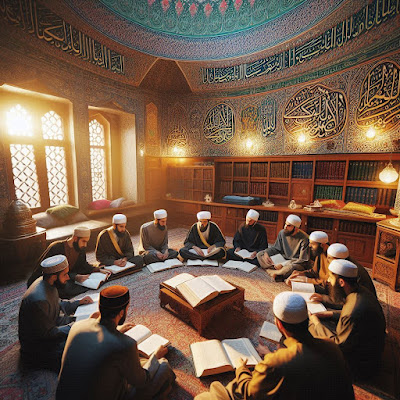📌 The Islamic Learning Model: From Discussion Circles to Lecture Halls
How Can We Restore the Original Islamic Learning Model?
The modern lecture-based education system is largely a secular model influenced by Western educational reforms during the colonial era. It prioritizes:
✅ Memorization over deep reflection
✅ One-directional teaching instead of discussion-based learning
✅ Standardized progress rather than personalized mastery
Why Is It Secular?
1️⃣ Separation of Spiritual and Intellectual Growth
Traditional Islamic education integrated spirituality, ethics, and critical thinking.
The modern system compartmentalizes knowledge—students learn Islam as an isolated subject rather than a lived, holistic experience.
2️⃣ Standardization Replaces the Ijazah Model
In classical Islamic learning, students studied under a mentor (sheikh) until they achieved mastery.
The secular system enforces rigid curricula and exams, making education more about passing tests than seeking wisdom.
3️⃣ Loss of the Halaqah Discussion Model
Islamic learning was traditionally dialogue-based, where students challenged, questioned, and contributed to discussions.
Today’s model is one-way, discouraging critical engagement.
4️⃣ Adopted from Colonial and Industrial-Era Schooling
Many madrasahs were restructured during the colonial period to resemble Western institutions.
The Ottoman reforms and later European-style universities introduced hierarchical, bureaucratic education models.
How Do We Restore an Islamic Model?
🔄 Shift from passive listening to interactive halaqahs.
📜 Reinstate mentorship (ijazah) over rigid exams.
📝 Encourage thematic Qur’anic study and deep tafsir reflection.
🤝 Foster intellectual dialogue instead of rigid authority structures.
By making these changes, Islamic education can return to its roots, creating scholars who are deep thinkers, spiritually aware, and actively engaged in their learning journey.



Comments